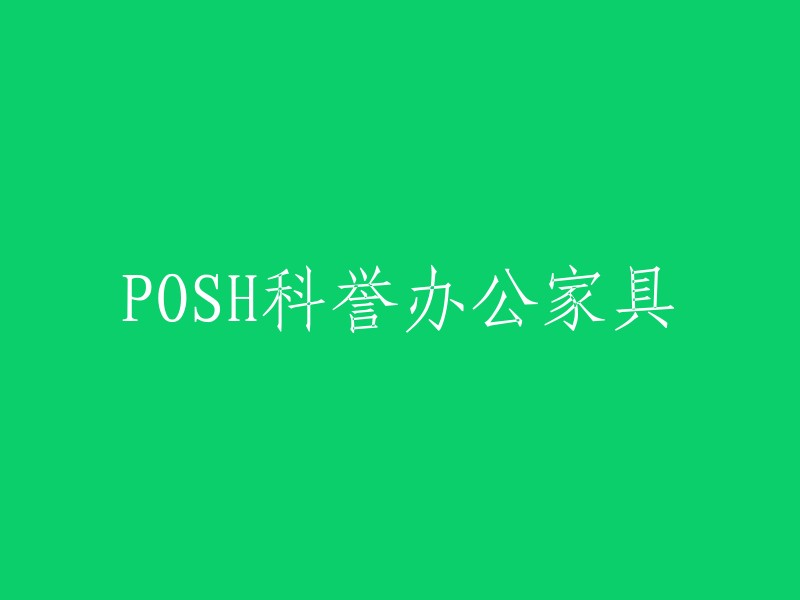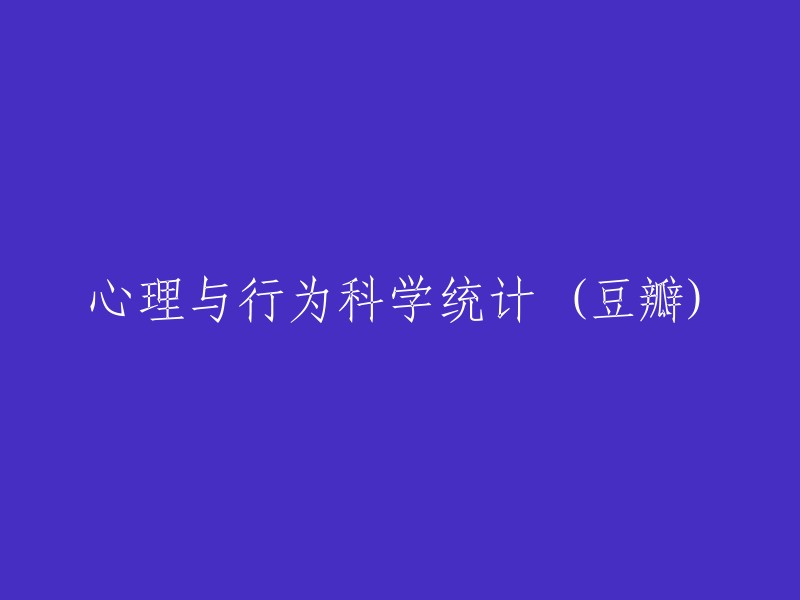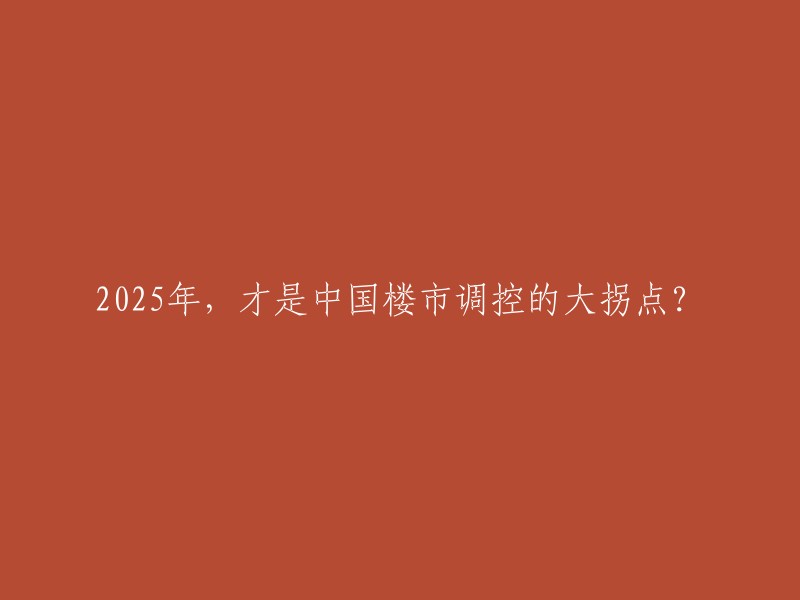在Android开发中,我们经常会用到LayoutInflater。它的主要作用是将一个XML文件渲染成一个View或者ViewGroup。虽然我们知道它的用法,但是弄清楚它的工作原理也是很有必要的。今天,我们就通过解析它的源码来分析下它的工作原理。
基本使用方法:
首先,我们来看一下它的几种用法:
1. 在Activity中使用:
```java
LayoutInflater layoutInflater = getLayoutInflater();
```
2. 在其他地方使用:
```java
LayoutInflater layoutInflater = LayoutInflater.from(context);
LayoutInflater layoutInflater = (LayoutInflater) context.getSystemService(Context.LAYOUT_INFLATER_SERVICE);
```
实际上,`from(context)`这种方法就是第三种方式。我们可以看一下LayoutInflater类内部的from方法:
```java
public static LayoutInflater from(Context context) {
LayoutInflater LayoutInflater = (LayoutInflater) context.getSystemService(Context.LAYOUT_INFLATER_SERVICE);
if (LayoutInflater == null) {
throw new AssertionError("LayoutInflater not found.");
}
return LayoutInflater;
}
```
接下来,我们再看看getLayoutInflater()方法的实现:
```java
public LayoutInflater getLayoutInflater() {
return getWindow().getLayoutInflater();
}
```
通过以上分析,我们可以了解到LayoutInflater的基本使用方法和原理。在实际开发中,我们可以根据需要选择合适的方法来获取LayoutInflater实例,并利用它来加载自定义布局。
在这段代码中,我们可以看到三种方式来获取LayoutInflater对象。首先,我们调用了Window类的getLayoutInflater()方法,但是需要注意的是,Window类本身是一个抽象类,其实现类是PhoneWindow。接下来,我们来看一下PhoneWindow类中getLayoutInflater()方法的实现:
```java
public LayoutInflater getLayoutInflater() {
return mLayoutInflater;
}
```
在PhoneWindow的构造方法中,可以看到这样的代码:
```java
public PhoneWindow(Context context) {
super(context);
mLayoutInflater = LayoutInflater.from(context);
}
```
从这里我们可以看出,这三种方式本质上是相同的。它们都通过Content的getSystemService方法并传递Context.LAYOUT_INFLATER_SERVICE参数来获取到LayoutInflater对象。实际上,在getSystemService方法中获取到的LayoutInflater对象是PhoneLayoutInflater这个子类对象。这是因为Context的包装类ContextThemeWrapper中定义了getSystemService方法:
```java
public Object getSystemService(String name) {
if (LAYOUT_INFLATER_SERVICE.equals(name)) {
if (mInflater == null) {
mInflater = LayoutInflater.from(getBaseContext()).cloneInContext(this);
}
return mInflater;
}
return getBaseContext().getSystemService(name);
}
```
而在LayoutInflater中的cloneInContext方法只是一个抽象方法,在PhoneLayoutInflater中有关于这个方法的实现。
这段代码首先实现了一个获取LayoutInflater对象的方法,通过传入Context参数,然后返回一个新的PhoneLayoutInflater对象。接着展示了如何使用LayoutInflater对象加载xml布局文件,通过调用inflate方法并传入相应的资源ID、根视图和是否附加到根视图的布尔值来实现。
此外,还介绍了inflate方法的三个重载版本:
1. inflate(int resource, ViewGroup root, boolean attachToRoot);
2. inflate(XmlPullParser parser, ViewGroup root);
3. inflate(XmlPullParser parser, ViewGroup root, boolean attachToRoot);
这三个方法之间的关系是,使用xml资源id加载的方法最终会调用inflate方法。在实际使用中,可以根据需要选择合适的重载版本。
最后,展示了使用inflate方法的一个示例,该方法接收一个XmlResourceParser对象、根视图和一个布尔值作为参数。在方法内部,首先获取资源对象,然后根据资源ID获取XmlResourceParser对象。接着尝试调用inflate方法进行布局加载,并在完成后关闭XmlResourceParser对象。
在Android中,布局文件是以XML格式存储的。为了解析这些XML布局文件,我们需要使用DOM、SAX或PULL这三种方式中的任意一种。在这三种方式中,PULL具有解析速度快、占用内存小的优点,因此Android选择了PULL方式来解析布局XML文件。
DOM(文档对象模型)是一种通用性较强的XML解析方式。它会将XML文件的所有内容读取到内存中,然后允许你使用DOM API遍历XML树、检索所需的数据。虽然DOM简单直观,但由于需要将文档读取到内存中,因此并不太适合移动设备。
SAX(简单API用于XML)是一个解析速度快并且占用内存少的XML解析器。它采用事件驱动的方式,不需要解析整个文档。要实现SAX,你需要继承DefaultHandler类,并覆写startElement、endElement、characters等方法。
与SAX类似,PULL(Pull XML parser)也是Android自带的XML解析器,采用事件驱动的方式。不同的是,PULL事件返回的是数值型数据。因此,推荐使用PULL作为解析布局XML文件的方式。
下面我们来看一下inflate方法的最终实现:
首先,我们需要获取系统的Resource对象。然后通过getLayout方法传递资源id获取到一个XML解析器对象。最后,调用inflate方法进行布局解析:
```java
public View inflate(XmlPullParser parser, @Nullable ViewGroup root, boolean attachToRoot) {
// ...省略部分代码...
}
```
在这个方法中,我们首先创建一个新的View对象,并根据传入的参数设置其父视图和根视图。接着,我们使用parser.next()方法遍历XML文档的节点,根据不同的节点类型进行相应的处理。例如,当遇到一个标签时,我们会创建一个新的View对象并将其添加到父视图中;当遇到一个属性时,我们会设置View对象的属性值等。最后,当遍历完所有节点后,我们会返回创建好的View对象。
public View inflate(XmlPullParser parser, @Nullable ViewGroup root, boolean attachToRoot) {
synchronized (mConstructorArgs) {
Trace.traceBegin(Trace.TRACE_TAG_VIEW, "inflate");
final Context inflaterContext = mContext;
final AttributeSet attrs = Xml.asAttributeSet(parser);
Context lastContext = (Context) mConstructorArgs[0];
mConstructorArgs[0] = inflaterContext;
// 这里默认就把root赋值给要返回的view了
View result = root;
try {
// Look for the root node.
// 首先会找到布局的根节点,如RelativeLayout、LinearLayout等
int type;
while ((type = parser.next()) != XmlPullParser.START_TAG &&
type != XmlPullParser.END_DOCUMENT) {
// Empty
}
if (type != XmlPullParser.START_TAG) {
throw new InflateException(parser.getPositionDescription() +
": No start tag found!");
}
// 拿到根节点,注意这里的节点只可能是开始根节点或者结束根节点
final String name = parser.getName();
if (TAG_MERGE.equals(name)) {
// 如果根节点是merge,那么它必须依附于root上,如果root为空或者依附属性为false,就会抛出异常。
if (root == null || !attachToRoot) {
throw new InflateException("
"ViewGroup root and attachToRoot=true");
}
// 解析根节点下面的子节点,并创建对应的子View添加到根View中来
rInflate(parser, root, inflaterContext, attrs, false);
} else {
// Temp is the root view that was found in the xml
// 根节点不是merge,就根据root以及当前节点信息来生成一个根View
final View temp = createViewFromTag(root, name, inflaterContext, attrs);
ViewGroup.LayoutParams params = null;
if (root != null) {
// 如果指定了root,那么根据root的布局属性生成一个LayoutParams
params = root.generateLayoutParams(attrs);
if (!attachToRoot) {
// 如果没有指定加载的资源xml依附于root,那么把上面生成的LayoutParams设置给根View
temp.setLayoutParams(params);
}
}
// 开始解析加载子节点,并创建对应的子View添加到根View中来
rInflateChildren(parser, temp, attrs, true);
// 如果指定了root并且指定加载的xml依附于root,那么当整个资源xml解析完后就将根View添加到root中去
if (root != null && attachToRoot) {
// 而且整个方法到这里就得到了要返回的结果了,因为一开始就把root赋值给result,最后返回的result仍然是添加了temp的root
root.addView(temp, params);
}
// 如果root为空且attachToRoot为false时,返回的就是根View
if (root == null || !attachToRoot) {
result = temp;
}
}
} catch (XmlPullParserException e) {
final InflateException ie = new InflateException(e.getMessage(), e);
ie.setStackTrace(EMPTY_STACK_TRACE);
throw ie;
} catch (Exception e) {
final InflateException ie = new InflateException(parser.getPositionDescription() +
": " + e.getMessage(), e);
ie.setStackTrace(EMPTY_STACK_TRACE);
throw ie;
} finally {
// Don't retain static reference on context.
mConstructorArgs[0] = lastContext;
mConstructorArgs[1] = null;
Trace.traceEnd(Trace.TRACE_TAG_VIEW);
}
// 最后返回结果View
return result;
}
}
根据提供的inflate()方法源码,我们可以总结出以下几点:
1. 当root为null时,attachToRoot的值不再重要。此时,方法会直接返回资源xml对应的已加载好的View。
2. 当root不为null且attachToRoot为false时,方法仍然会返回资源xml对应的已加载好的View,但同时会将root的LayoutParams设置给返回的View。
3. 当root不为null且attachToRoot为true时,方法会将资源xml对应的View添加到root中,然后返回root。
接下来,我们来了解一下如何将xml生成对应的View。无论根节点是否需要合并(merge),最后都会调用rInflate()方法来解析并加载子View。实际上,rInflateChildren()方法也是调用了rInflate(),所以让我们一起看一下rInflate()方法的源码。
```java
void rInflate(XmlPullParser parser, View parent, Context context, AttributeSet attrs, boolean finishInflate) throws XmlPullParserException, IOException {
final int depth = parser.getDepth();
int type;
while (((type = parser.next()) != XmlPullParser.END_TAG || parser.getDepth() > depth) && type != XmlPullParser.END_DOCUMENT) {
if (type != XmlPullParser.START_TAG) {
continue;
}
final String name = parser.getName();
if (TAG_REQUEST_FOCUS.equals(name)) {
parseRequestFocus(parser, parent);
} else if (TAG_TAG.equals(name)) {
parseViewTag(parser, parent, attrs);
} else if (TAG_INCLUDE.equals(name)) {
if (parser.getDepth() == 0) {
throw new InflateException("
}
parseInclude(parser, context, parent, attrs);
} else if (TAG_MERGE.equals(name)) {
throw new InflateException("
} else {
final View view = createViewFromTag(parent, name, context, attrs);
final ViewGroup viewGroup = (ViewGroup) parent;
final ViewGroup.LayoutParams params = viewGroup.generateLayoutParams(attrs);
rInflateChildren(parser, view, attrs, true);
viewGroup.addView(view, params);
}
}
if (finishInflate) {
parent.onFinishInflate();
}
}
```
通过提供的源码,我们可以看出在Android中,无论是`temp`还是每一个子视图(View),都是通过`createViewFromTag()`方法生成的。下面我们将深入探讨这个方法的实现原理。
首先,`createViewFromTag()`方法位于`ViewGroup`类中,它接收一个参数`tag`,该参数通常用于标识特定的子视图。在这个方法内部,它会遍历当前视图组的所有子视图,并查找具有相应标签(tag)的子视图。找到匹配的子视图后,它会调用`generateImplicitParent()`方法为该子视图生成隐式父视图。最后,返回找到的子视图以及新生成的隐式父视图。
接下来,我们可以通过观察代码中的逻辑来了解如何使用`createViewFromTag()`方法。当需要创建一个新的子视图时,可以先为其分配一个唯一的标签(tag),然后将该标签传递给`createViewFromTag()`方法。这样,无论何时需要获取或操作这个标签所对应的子视图时,都可以通过调用`createViewFromTag()`方法轻松实现。
总之,`createViewFromTag()`方法是Android中实现动态添加和查找子视图的重要手段之一。通过使用这个方法,开发者可以在运行时灵活地创建和管理视图组中的子视图。
以下是根据您提供的内容重构后的代码,并保持了段落结构:
```java
View createViewFromTag(View parent, String name, Context context, AttributeSet attrs, boolean ignoreThemeAttr) {
...
try {
View view;
if (mFactory2 != null) {
view = mFactory2.onCreateView(parent, name, context, attrs);
} else if (mFactory != null) {
view = mFactory.onCreateView(name, context, attrs);
} else {
view = null;
}
if (view == null && mPrivateFactory != null) {
view = mPrivateFactory.onCreateView(parent, name, context, attrs);
}
if (view == null) {
final Object lastContext = mConstructorArgs[0];
mConstructorArgs[0] = context;
try {
if (-1 == name.indexOf('.')) {
view = onCreateView(parent, name, attrs);
} else {
view = createView(name, null, attrs);
}
} finally {
mConstructorArgs[0] = lastContext;
}
}
return view;
} catch (InflateException e) {
throw e;
} catch (ClassNotFoundException e) {
final InflateException ie = new InflateException(attrs.getPositionDescription() + ": Error inflating class " + name, e);
ie.setStackTrace(EMPTY_STACK_TRACE);
throw ie;
} catch (Exception e) {
final InflateException ie = new InflateException(attrs.getPositionDescription() + ": Error inflating class " + name, e);
ie.setStackTrace(EMPTY_STACK_TRACE);
throw ie;
}
}
```
如果名称中不包含`.`,则执行以下操作:
```java
if (-1 == name.indexOf(".android.view.")) {
// 在此处添加您的代码
}
```
```java
public final View createView(String name, String prefix, AttributeSet attrs) throws ClassNotFoundException, InflateException {
Constructor constructor = sConstructorMap.get(name);
// 先从缓存中找是否存在该节点对应View的构造方法
if (constructor != null && !verifyClassLoader(constructor)) {
constructor = null;
sConstructorMap.remove(name);
}
Class clazz = null;
try {
if (constructor == null) {
// 没有就先根据类加载器通过全类名得到该类的反射类,再获取其构造方法
clazz = mContext.getClassLoader().loadClass(
prefix != null ? (prefix + name) : name).asSubclass(View.class);
if (mFilter != null && clazz != null) {
boolean allowed = mFilter.onLoadClass(clazz);
if (!allowed) {
failNotAllowed(name, prefix, attrs);
}
}
constructor = clazz.getConstructor(mConstructorSignature);
constructor.setAccessible(true);
sConstructorMap.put(name, constructor);
} else {
if (mFilter != null) {
Boolean allowedState = mFilterMap.get(name);
if (allowedState == null) {
clazz = mContext.getClassLoader().loadClass(
prefix != null ? (prefix + name) : name).asSubclass(View.class);
boolean allowed = clazz != null && mFilter.onLoadClass(clazz);
mFilterMap.put(name, allowed);
if (!allowed) {
failNotAllowed(name, prefix, attrs);
}
} else if (allowedState.equals(Boolean.FALSE)) {
failNotAllowed(name, prefix, attrs);
}
}
}
Object[] args = new Object[3];
args[0] = mContext; // Context对象作为第一个参数传入
args[1] = prefix != null ? prefix + name : name; // View名称作为第二个参数传入
args[2] = attrs; // AttributeSet作为第三个参数传入
// 通过构造方法来生成对应的View
final View view = constructor.newInstance(args);
// 如果是ViewStub的情况
if (view instanceof ViewStub) {
final ViewStub viewStub = (ViewStub) view;
viewStub.setLayoutInflater(cloneInContext((Context) args[0]));
}
return view;
} catch (InstantiationException | IllegalAccessException e) {
throw new ClassNotFoundException("Failed to instantiate class " + name, e);
} catch (IllegalArgumentException | InvocationTargetException e) {
throw new InflateException("Failed to inflate class " + name, e);
} finally {
if (constructor != null) {
sConstructorMap.remove(name); // 从缓存中移除已使用的构造方法引用,避免重复使用导致的问题
}
}
}
```
LayoutInflater的工作原理可以简单地概括为以下几个步骤:
1. 从xml文档的根节点开始解析。
2. 递归解析每一个子节点,获取该节点的全类名(即该节点所代表的视图类型)。
3. 通过ClassLoader获取到对应类的构造方法,并创建该类的实例(View)。
4. 将创建好的 View 添加到它的上一层节点(父View)中。
5. 同时解析该节点的属性作为 View 的属性。
6. 每个层级的节点都会被生成一个个的 View,并根据 View 的层级关系添加到对应的上层节点中去(直接父View)。
7. 最终返回一个包含了所有解析好的子View的布局根View。
总之,LayoutInflater通过XML解析器从根节点开始,逐个解析每个节点并创建对应的View实例,最终将所有的子View添加到父View中构建出完整的视图树结构。






